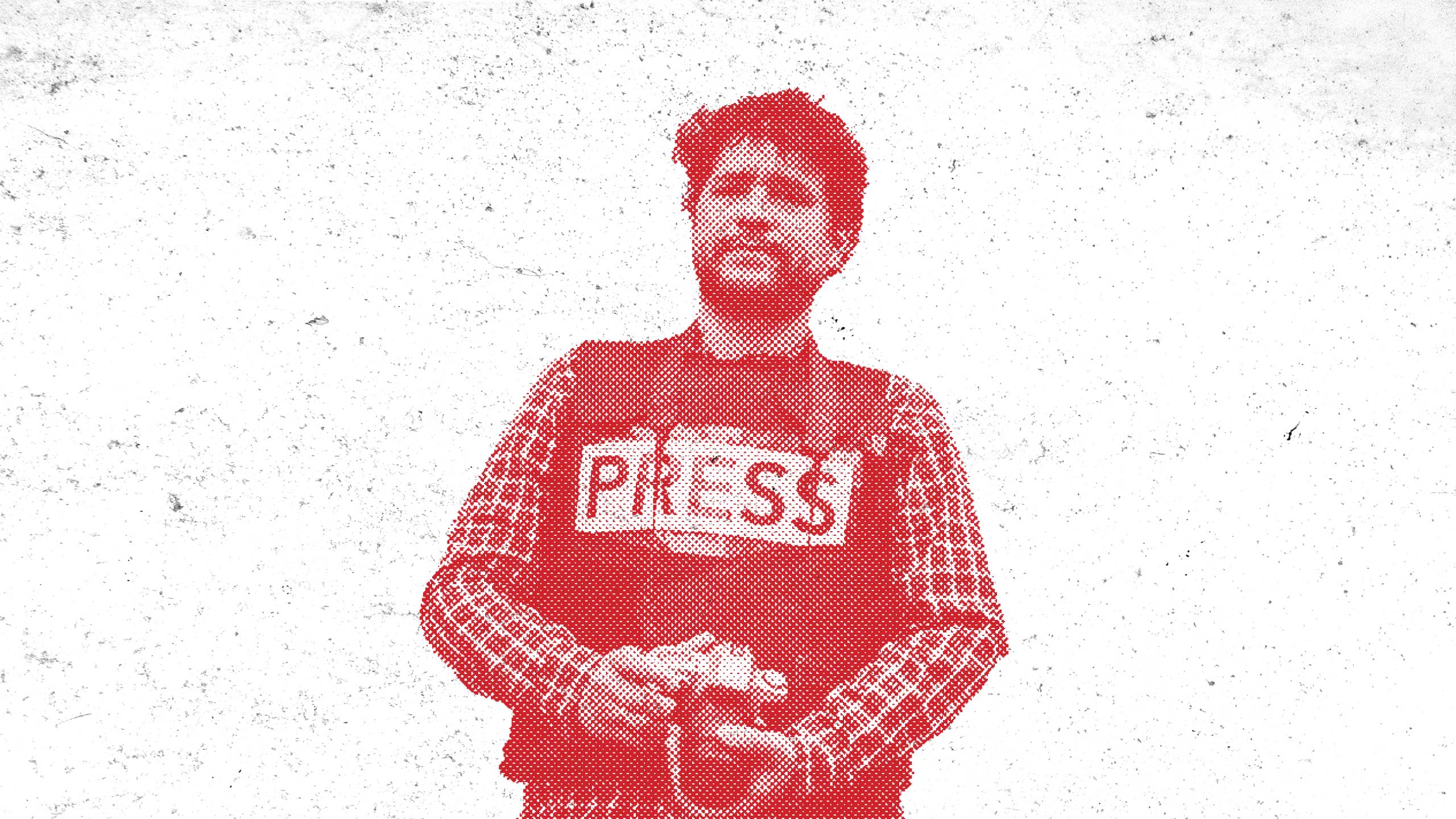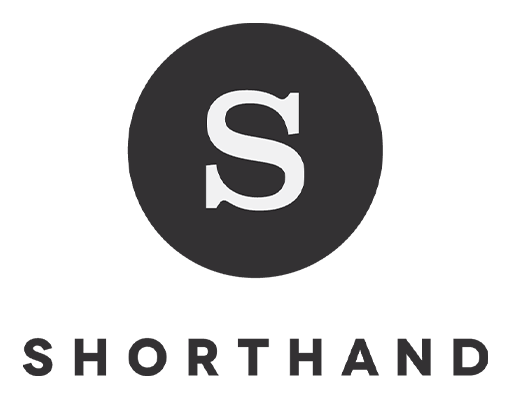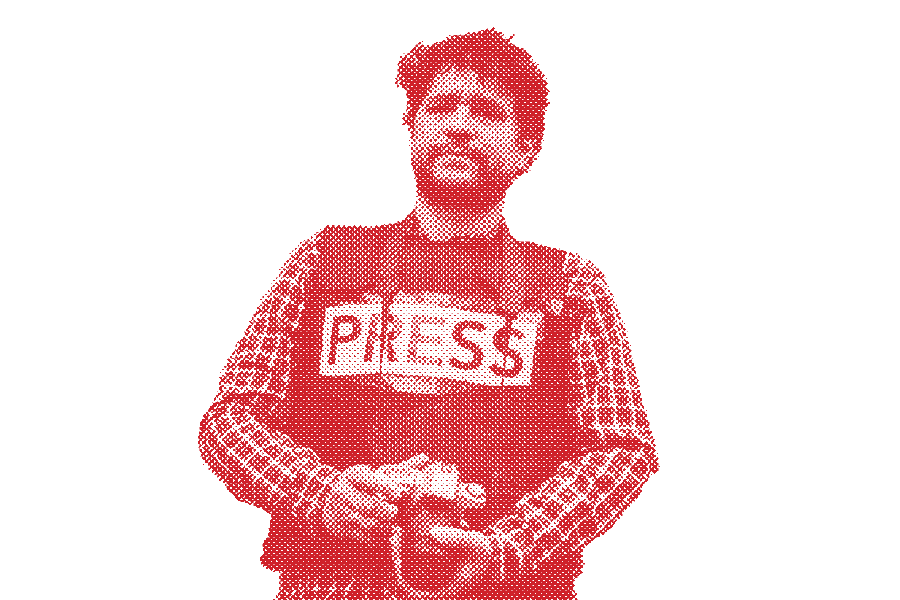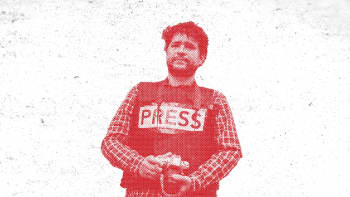Truth and power:
7 examples of superb watchdog journalism
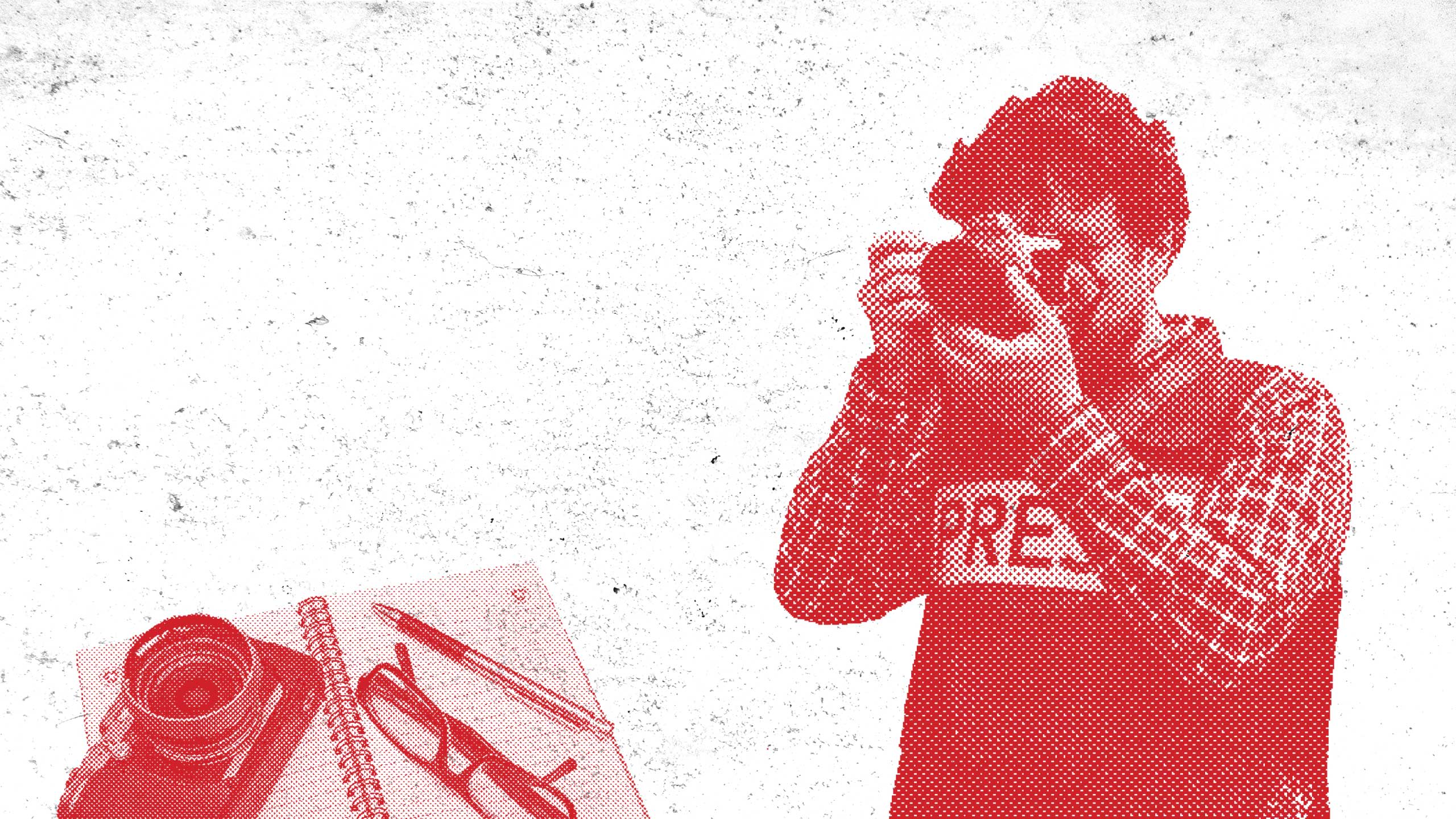
Going into the industry, it’s what many journalists dream of: breaking that story, exposing a deep dark secret that powerful actors have wrestled to keep hidden, with truth and justice prevailing against the weight of corrupt establishments.
Watchdog journalism is an essential part of a healthy media and political landscape, and has been since the advent of mass communication.
But what does watchdog journalism look like in a modern media environment?
With the TikTok-ification of the digital sphere, growing public mistrust of the press, and ongoing pressure on the business models of news organisations, watchdog journalism is in a unique position. It’s able to tell critical stories in new ways, reaching more people than ever; but it is also under threat.
This article explores examples of watchdog journalism both iconic and contemporary, showing the power and real-world impact of the form. Along the way, we’ll explore the opportunities that the contemporary digital landscape presents for telling and circulating stories in new ways.
What do the BBC, Tripadvisor, and Penguin have in common?
They craft stunning, interactive web content with Shorthand. And so can you! Create your first story free — no code or web design skills required.
Sign up now.
What is watchdog journalism?
Watchdog journalism is a specific form of investigative journalism that shines a light on systemic abuses of power, often from the wealthy and influential who have a vested interest in keeping corruption under the radar.
The demands of the digital world have changed the shape and methodology of investigative journalism — such as with the rise of new forms, like comics journalism — but the central purpose remains the same. At its heart is the pursuit of transparency and accountability, specifically in relation to abuse of power.
The role of watchdog journalism is to create a more just, more informed world, even if that involves dragging grubby truths kicking and screaming into the light (the mixed metaphor only works if you think of, say, dodgy political investments as unwashed babies).
This type of reporting isn’t new, but the technicalities of analysing and reporting on things like 2.6 terabytes of leaked data is a distinctly 21st-century problem. Readers, too, are consuming news media in different ways, switching between bite-sized content à la TikTok, or long, but increasingly immersive forms.
While many students of journalism studies and media studies aspire to become watchdog journalists, investigative journalism as a whole is becoming harder than ever to fund. While there are many great nonprofit initiatives to fund and support watchdog journalism — including the Nieman Foundation — it remains a challenge for local news outlets.
Why does watchdog journalism matter?
First and foremost, as well as leading to shifts in public opinion, the watchdog function of the fourth estate can lead to material change — boards resigning, corrupt companies folding, and litigation processes opening up pathways toward justice for victims.
As the Washington Post’s slogan says, “democracy dies in darkness” — once something has been made public, it demands accountability.
In this article, we do a little digging of our own, exploring seven superb examples of watchdog journalism. We’ll look at not just the stories, but how the way they’re presented, especially how pushing the boundaries of traditional news media might open up new opportunities for speaking truth to power.

What is watchdog journalism?
Watchdog journalism is a specific form of investigative journalism that shines a light on systemic abuses of power, often from the wealthy and influential who have a vested interest in keeping corruption under the radar.
The demands of the digital world have changed the shape and methodology of investigative journalism — such as with the rise of new forms, like comics journalism — but the central purpose remains the same. At its heart is the pursuit of transparency and accountability, specifically in relation to abuse of power.
The role of watchdog journalism is to create a more just, more informed world, even if that involves dragging grubby truths kicking and screaming into the light (the mixed metaphor only works if you think of, say, dodgy political investments as unwashed babies).
This type of reporting isn’t new, but the technicalities of analysing and reporting on things like 2.6 terabytes of leaked data is a distinctly twenty-first-century problem. Readers, too, are consuming news media in different ways, switching between bite-sized content à la TikTok, or long, but increasingly immersive forms.
While many students of journalism studies and media studies aspire to become watchdog journalists, investigative journalism as a whole is becoming harder than ever to fund. While there are many great nonprofit initiatives to fund and support watchdog journalism — including the Nieman Foundation — it remains a challenge for local news outlets.
Why does watchdog journalism matter?
First and foremost, as well as leading to shifts in public opinion, the watchdog function of the fourth estate can lead to material change — boards resigning, corrupt companies folding, and litigation processes opening up pathways toward justice for victims.
As the Washington Post’s slogan says, “democracy dies in darkness” — once something has been made public, it demands accountability.
In this article, we do a little digging of our own, exploring seven superb examples of watchdog journalism. We’ll look at not just the stories, but how the way they’re presented, especially how pushing the boundaries of traditional news media might open up new opportunities for speaking truth to power.

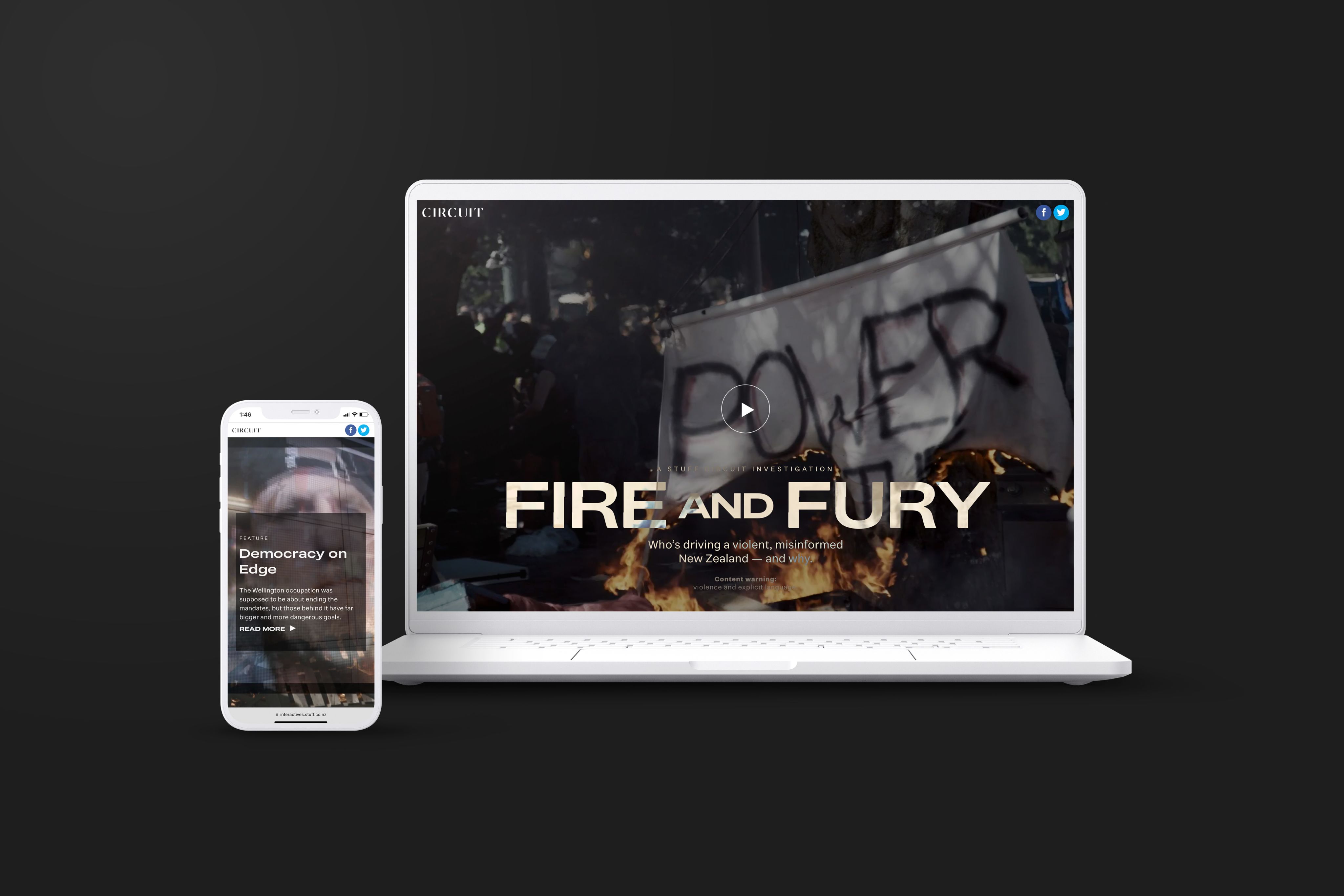
Fire and Fury | Stuff
In February 2022, a group protesting mandatory COVID-19 vaccinations camped out in the grounds of Aotearoa New Zealand’s parliamentary precinct for almost three weeks, spreading across and restricting access to several Wellington suburbs.
'Fire and Fury' investigates the role targeted misinformation had on the occupation, asking the question “who’s driving a violent, misinformed New Zealand — and why?”
It’s obviously a confronting and complex topic, so its presentation is critical. The main page is where the hour-long documentary is hosted, but there are also supplementary features, ‘cheat sheets’, and opinion pieces embedded underneath the documentary.
The interactive elements allow the reader to understand themselves as part of the story and, to some degree, capable of influencing the outcomes. Plus, by combining written and visual media, readers can move through the story at their own pace.
It’s a superb example of how watchdog journalism uses the best investigative techniques to counteract powerful voices for disinformation and extremism.
Looking for more examples of powerful journalism? Check out our roundup of environmental journalism examples.
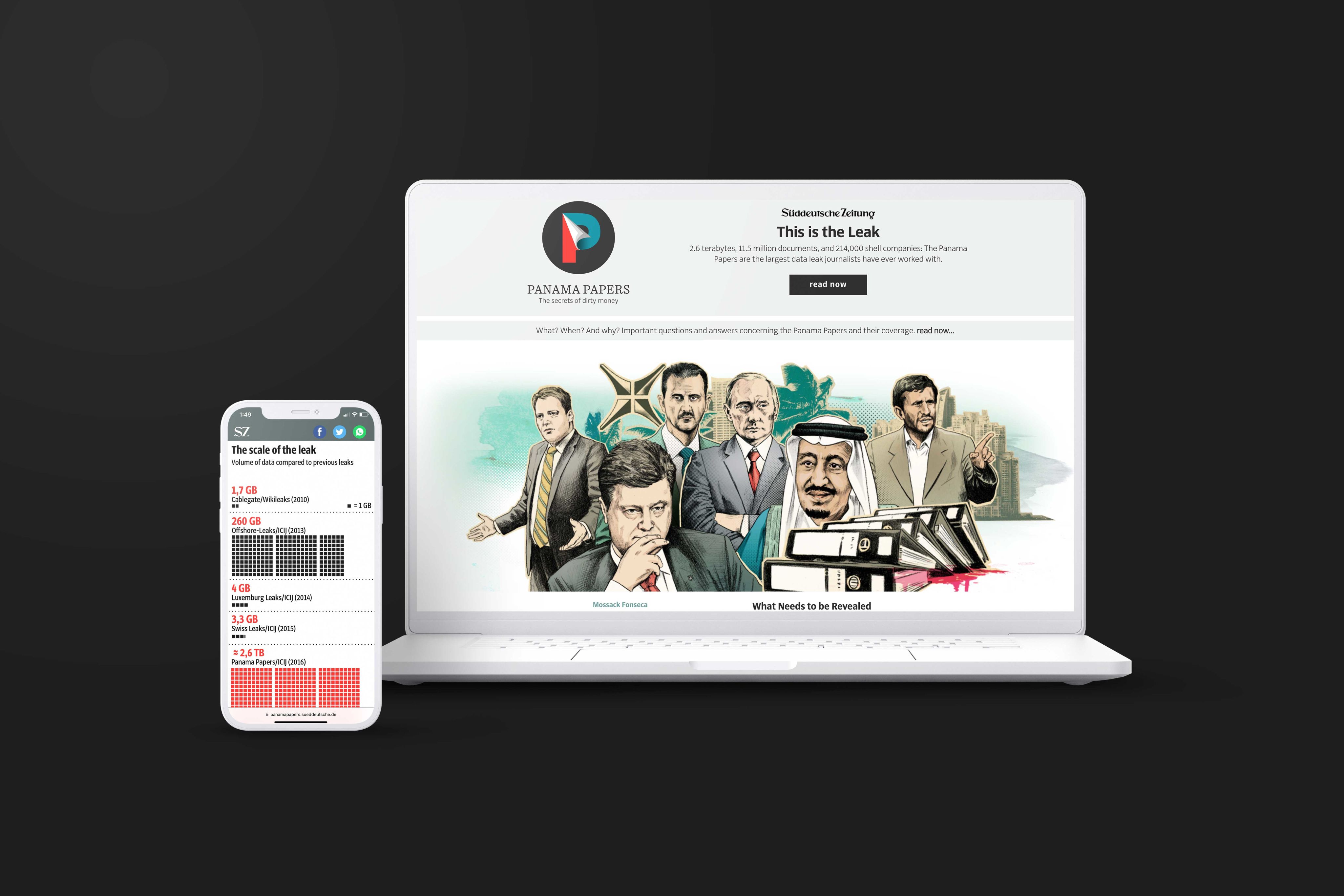
Panama Papers | Süddeutsche Zeitung
The Panama Papers were 11.5 million documents making up 2.6 terabytes of data, acquired by German news company Süddeutsche Zeitung (SZ) from an anonymous whistleblower, and published in 2016.
The documents demonstrate the corrupt practices of the law firm Mossack Fonseca, aka Mossfon, in painstaking detail. The reporting also revealed the myriad public officials, celebrities, and other influential actors who used the Panama-based company to dodge taxes, finance illegal operations, and transfer millions of dollars away from public scrutiny. Further, Mossfon also provided services to “dictators, drug cartels, Mafia clans, fraudsters, weapons dealers, and regimes like North Korea or Iran.”
As for what the Panama Papers reporting actually did? To quote SZ journalists Bastian Obermeyer and Frederik Obermaier, “Mossack Fonseca’s founders are in custody, most of its employees have been sacked, and it is under investigation around the world. The law firm at the heart of the Panama Papers has lost its unique selling proposition: absolute secrecy.”
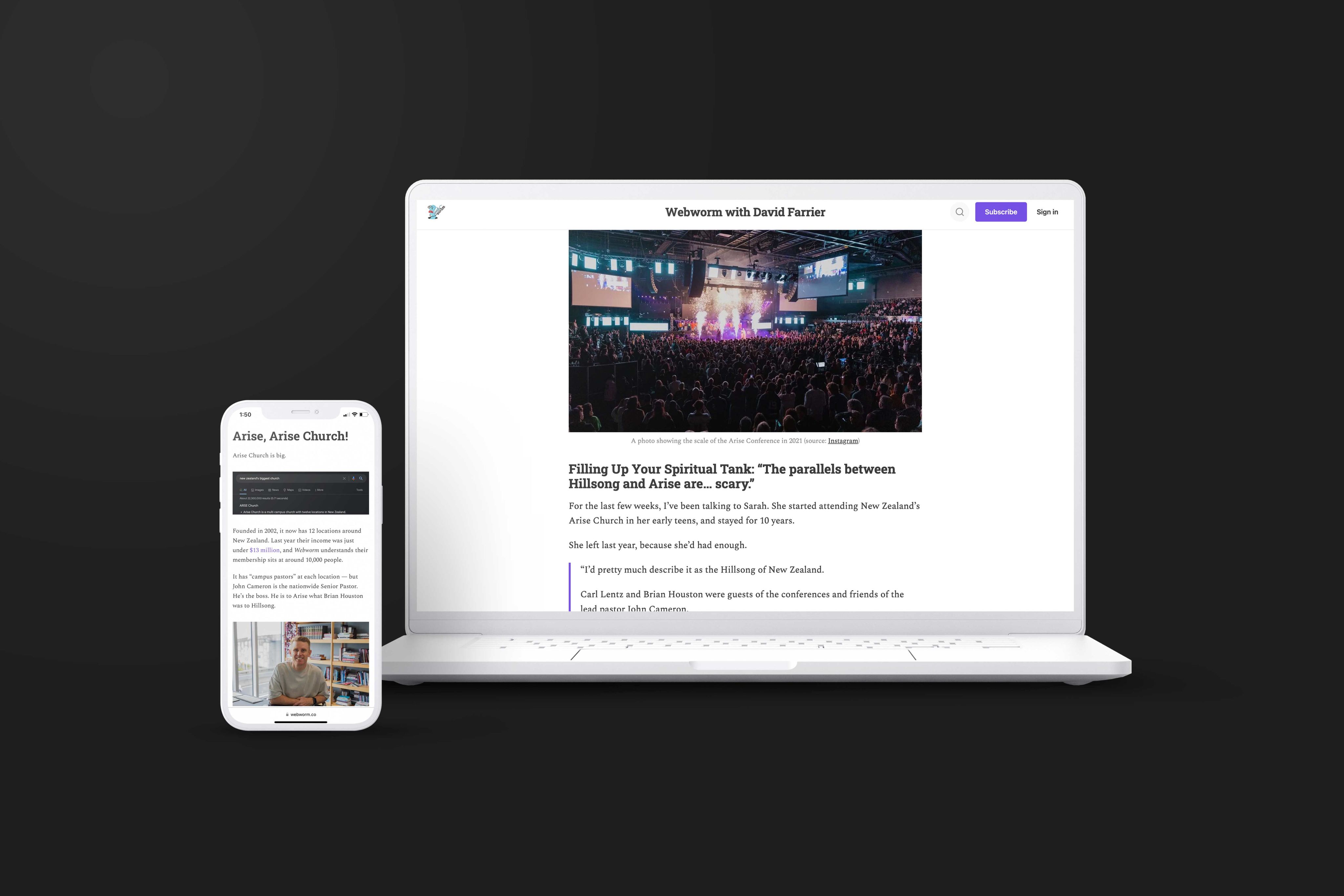
Hillsong Isn’t the Only Abhorrent Megachurch | David Farrier’s Webworm
On April 3, 2022, Kiwi journalist David Farrier published an explosive newsletter titled, 'Hillsong Isn’t the Only Abhorrent Megachurch' in his Substack, Webworm. The focus was Arise, an independent New Zealand Pentecostal church. Leaning on allegations and personal stories of financial, emotional, and physical abuse perpetrated by Arise leaders, the results of the six-month investigation was damning for a church that deliberately kept out of the public eye.
As the investigation unfolded and Farrier continued to publish, mainstream media outlets picked up the story, which ballooned to reveal instances of financial abuse, racism, sexual harassment, and conversion practices across Arise’s twelve New Zealand locations. While Arise leadership initially tried to ignore Farrier and weather the media storm, it eventually instigated an internal review process that led to the resignation of their lead pastors and the closing of their Auckland ‘campus’.
One fascinating aspect is that Farrier’s reportage was independent — he’s formally trained and recognised as a journalist, but his work into Arise wasn’t on behalf of a media organisation, and his income came from paying newsletter subscribers. Apart from being an empathetic and influential example of watchdog journalism, Farrier’s Arise investigation harks back to an older sense of the term ‘newsletter’, where an independent project might also provide an avenue for truly excellent public interest journalism.
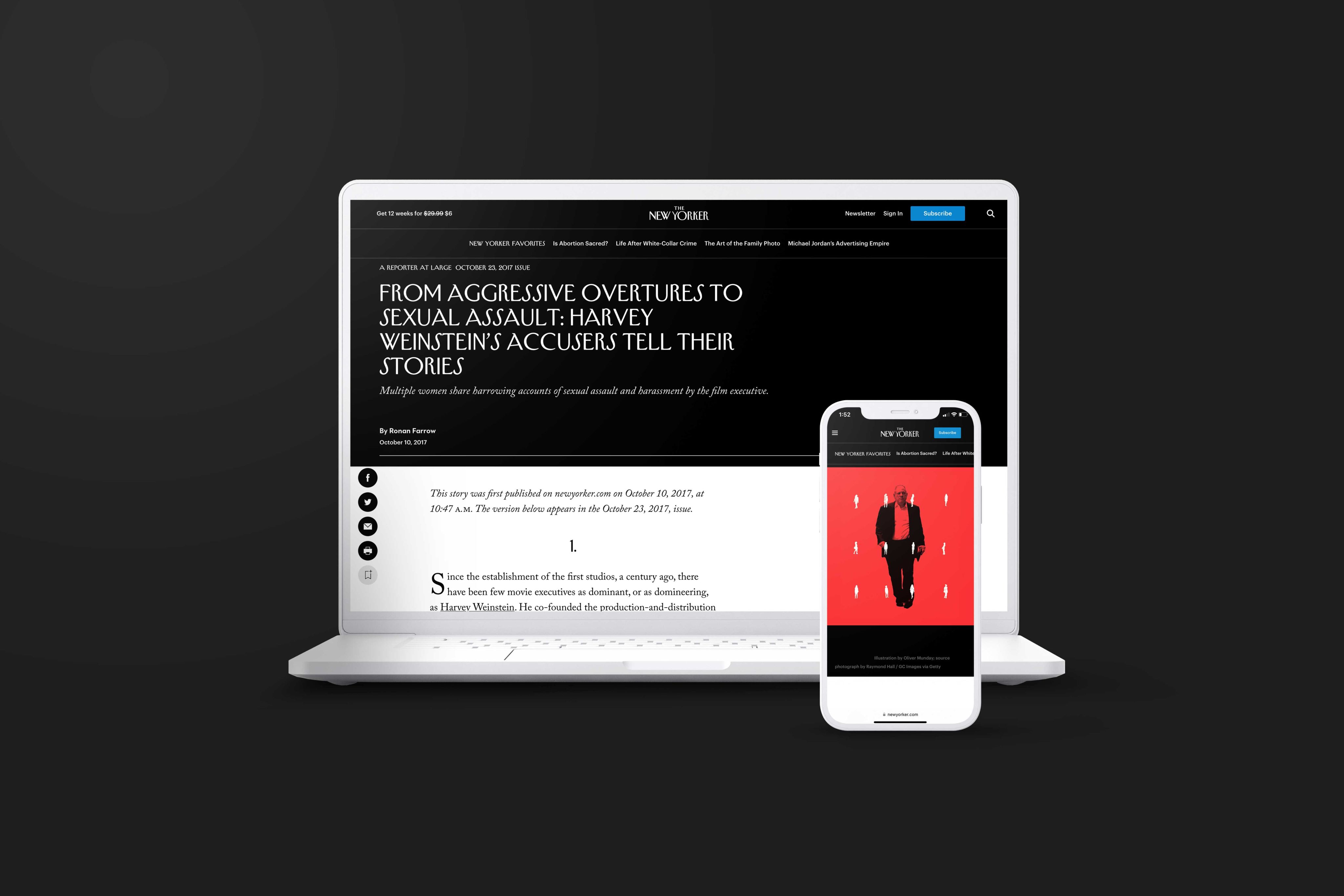
From Aggressive Overtures to Sexual Assault: Harvey Weinstein’s Accusers Tell Their Stories | The New Yorker
Another of the century’s most powerful instances of watchdog journalism, this 10,000 word piece details producer Harvey Weinstein’s history of sexual abuse, assault, and misconduct across his years in the entertainment industry. Written by journalist Ronan Farrow, it has been credited with kicking off the #MeToo movement and blowing open the culture of complicity that protected sexual abusers at the highest levels of Hollywood.
Many of the women who came forward with allegations were terrified by the very real possibility of legal, professional, or personal retribution, so the story had to ensure protection for Farrow’s sources alongside stringent fact-checking.
Further, the reporting had to be as objective as possible to avoid any allegations of bias or defamation. Farrow’s book Catch and Kill details the extraordinary pushback he and other journalists (especially New York Times journos Jodi Kantor and Megan Twohey) faced from the extremely entrenched web of Weinstein’s rich and powerful friends, countless NDAs, reticence within their own media organisations, and even international espionage groups charged with stopping the investigation.
After its publishing in October 2017, the story caught and spread like wildfire across social media and other news organisations.
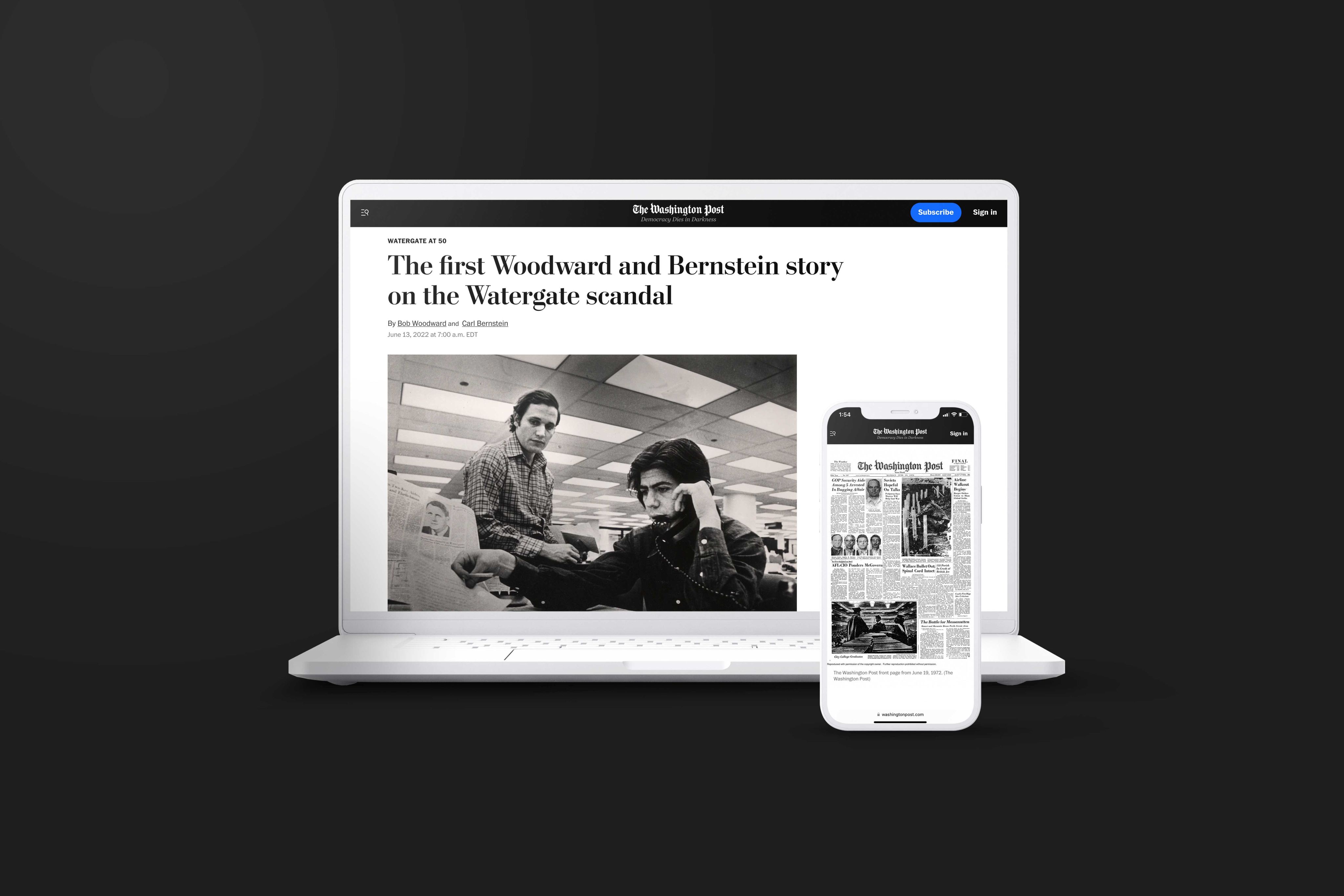
Watergate | The Washington Post
Talking about explosive investigative reporting with real-world impacts, it’s impossible to walk past the extraordinary watchdog reporting of Bob Woodward and Carl Bernstein on the Watergate scandal.
It was Washington Post reporter Alfred E Lewis who first reported that the Democratic National Committee Headquarters in Washington D.C, in an office building called Watergate, had been broken into. Investigative journalists Woodward and Bernstein picked up the story and began chasing leads, receiving information from an anonymous source who was later revealed to be the deputy director of the FBI, Mark Felt.
Picking through the mess revealed the connections between the break-in and the Committee to Re-Elect the President (CRP, often critically referred to as CREEP), a government committee with the express aim of keeping Republican President Richard Nixon in power.
The story of political scandal blew up to an unprecedented extent — it seemed like all eyes were on Nixon. The discoveries of the Post and other media organisations spanned dodgy donations, kidnapping, and wire-tapping, and are generally considered to have led to Nixon’s resignation from office.
While most of the original Watergate stories have been digitised, it’s worth remembering that they were originally published in broadsheet form. Transferring them to the internet has made it easy to consolidate historical stories in one place, instead of having to chase them through microfiche and old boxes.
The form of the Watergate reporting wasn’t particularly innovative, but it’s truly the iconic example of watchdog journalism. The rigorous investigation brought massive public attention to the case, and demanded that the White House live up to the standards of democratic governance it claimed to represent.
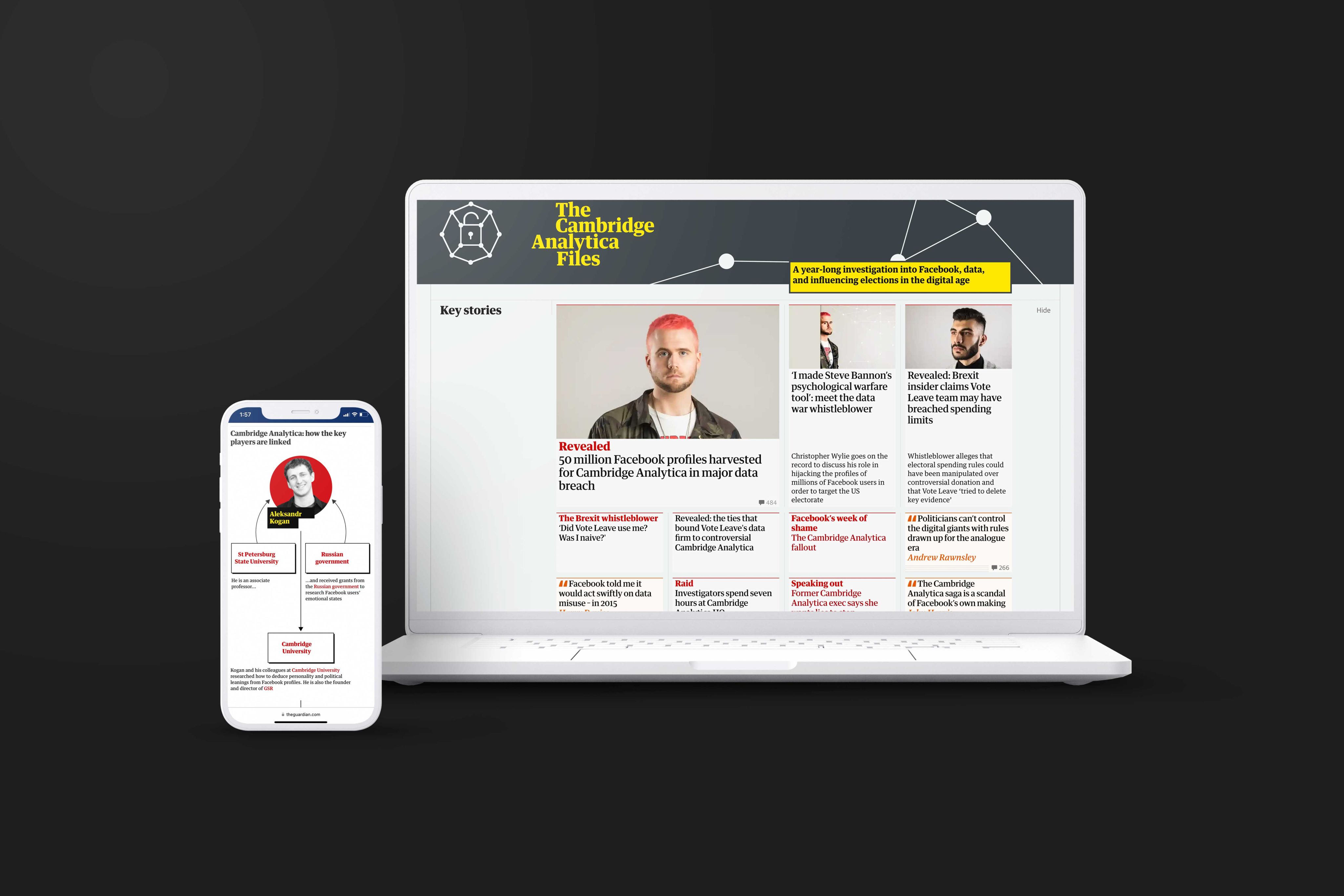
Cambridge Analytica | The Guardian and The New York Times
Christopher Wylie was the man who came up with the idea of combining big data, social media, and information operations to create targeted political ads used by the data firm Cambridge Analytica. He was also one of two whistleblowers (the other was Shahmir Sanni) critical to the Cambridge Analytica story broken by The Guardian, The New York Times and The Observer.
Guardian journalist Carole Cadwalladr tracked Wylie down, investigating the complex links between the Brexit Vote Leave and Trump campaigns, data privacy, corporate corruption, and how to litigate the internet. Between the three media organisations, many dozens of stories were published — often feature-length pieces and op-eds with embedded data, interviews with Wylie and Sanni, and explanatory graphics.
“The problem is,” said Cadwalladr a year later, “that while the tech companies have been called to account, they haven’t actually been held accountable.” Zuckerberg ignored his summons to various parliamentary inquiries, and Facebook’s share prices bounced back quickly. Still, it marked a definite shift in public opinion and awareness of Big Tech’s data usage — as well as the shocking revelation that, in the words of Jason Klint, “a company literally controlled by one person appears to be unaccountable to anyone anywhere on Earth.”
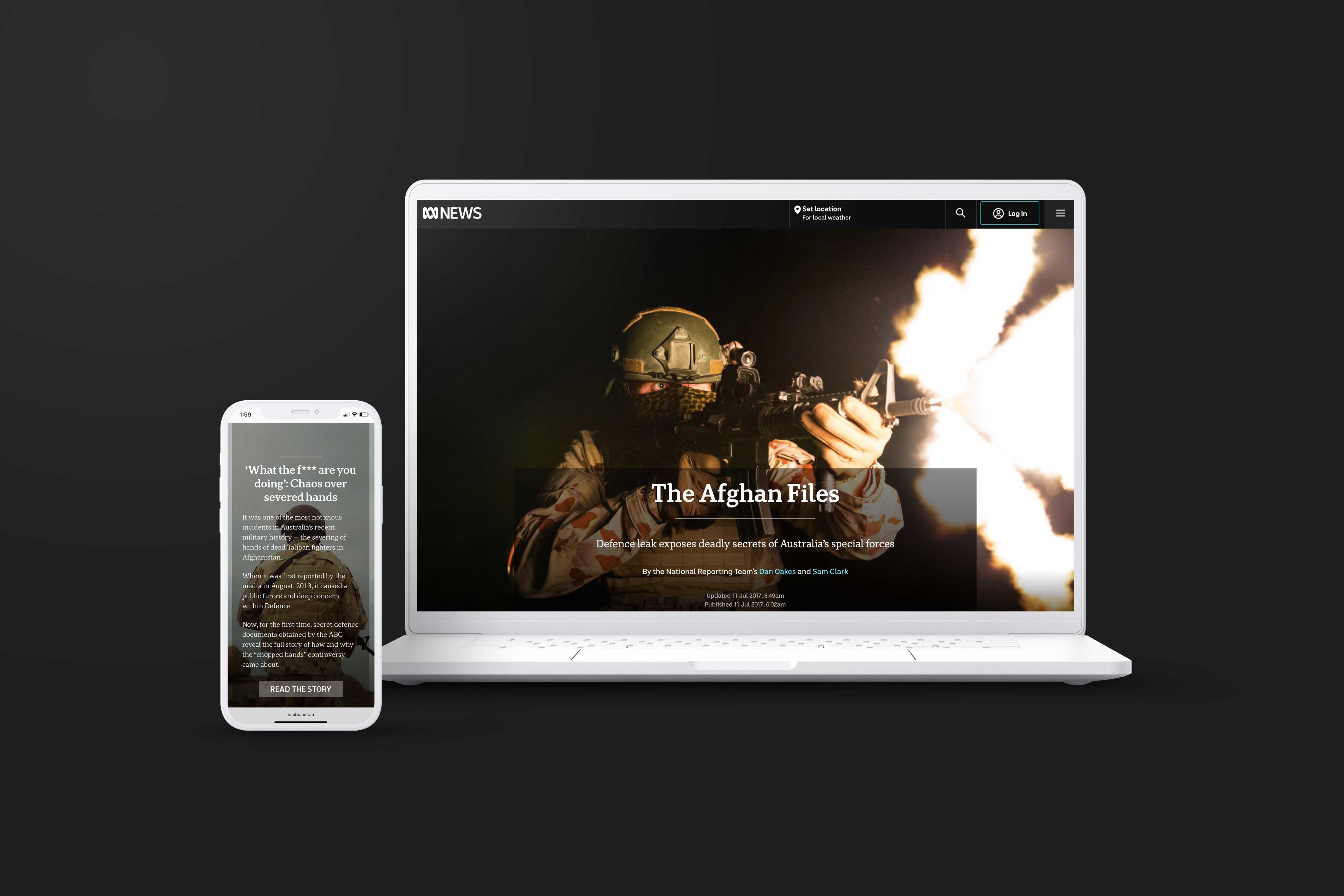
The Afghan Files | ABC News
'The Afghan Files' are a seven-part series from ABC News, investigating leaked Defence documents detailing the conduct of Australian special forces in Afghanistan.
The documents were provided to the ABC by a whistleblower revealed to be former British Army major and Australian Army lawyer David McBride, and shed light on concerns around Special Forces conduct when fighting the Taliban.
When the investigative series was released in 2017, the Australian Defence Force had already commissioned a formal inquiry that spanned four years, which found “credible information of 23 incidents of the alleged unlawful killing of 39 individuals.”
But the Afghan Files drew public attention to this internal inquiry, helping to address rumours and demand transparency.
The exposé’s seven stories contain a mix of text, embedded videos, and highlighted passages from the leaked documents. The large text and clean format make the stories readable and free from any distractions, so that the reader can focus fully on its importance and complexity.
And it clearly was important, because the reporting led to an Australian Federal Police raid on the ABC, and biometric information from contributing journalists, Dan Oakes and Sam Clark. In turn, this dramatic retaliation led to widespread ongoing conversations around press freedom and the role of watchdog journalism in national security.
Final thoughts
Whether you work in news media, or just want to think more about the mechanisms of reporting, storytelling, and breaking news, watchdog journalism stands as the pinnacle of rigorous, high-quality journalism for the public good.
Press freedom and the watchdog role are critical to a healthy democratic ecosystem. As it experiments with forms old and new, it reminds us of the importance of holding to high ideals and standards of public discourse — and the potent disinfecting power of sunlight.

Whether you work in news media, or just want to think more about the mechanisms of reporting, storytelling, and breaking news, watchdog journalism stands as the pinnacle of rigorous, high-quality journalism for the public good.
Press freedom and the watchdog role are critical to a healthy democratic ecosystem. As it experiments with forms old and new, it reminds us of the importance of holding to high ideals and standards of public discourse — and the potent disinfecting power of sunlight.
Ready to start writing your own big story? Why not check out our ten free feature article templates.
